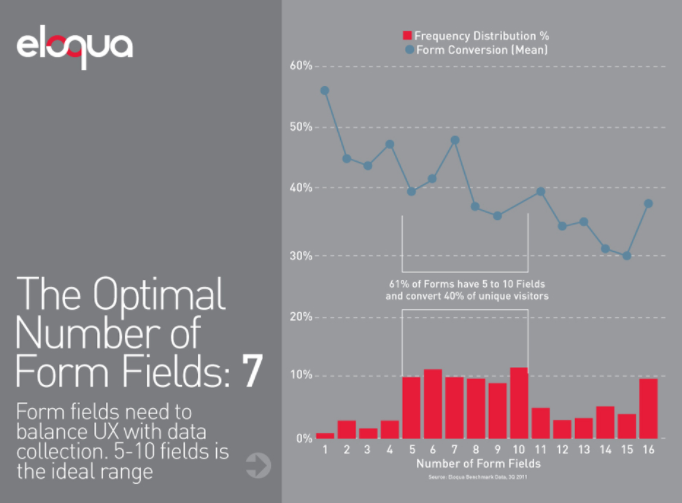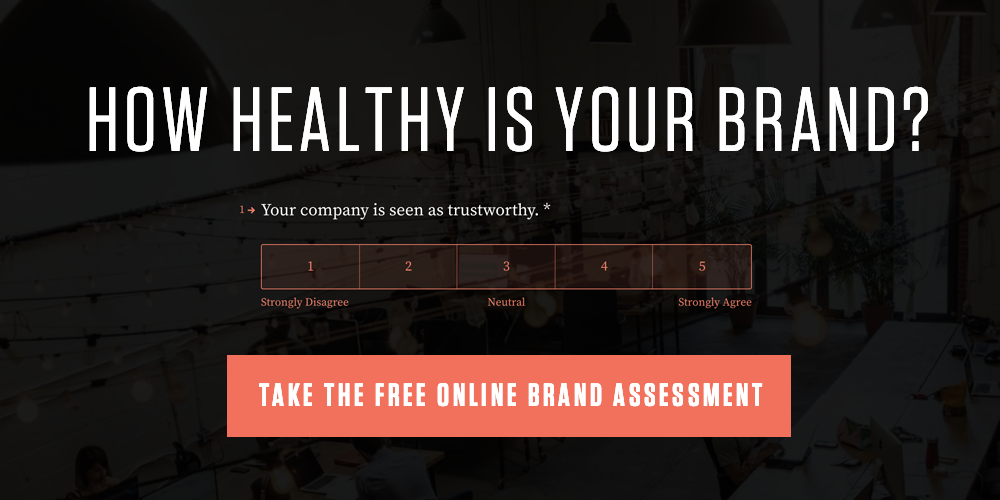Forms are the gate to your world of digital marketing for schools. It’s a stepping stone to try and acquire contact info from people that want what you have to offer.
We’ve evolved from writing phone numbers on napkins, to handing out business cards, to dropping those business cards in fishbowls, to the online form. When used in a nonabusive way, the form can help us create and deliver the right content, to the right person, at the right time. That’s what we’re all shooting for, right? Schools, for example, can capture data to help pre-qualify prospective students before they apply, or before they get to admissions. To capture this data, you’ll need to ask the right questions on your landing page forms. Should you send a prospective student information about the engineering program or your after-school day-care program? Let the form be your guide.
Besides the absolute necessary fields (first name, last name, and email) there are some things you should consider(Note: not all of these should be asked on the initial form. Use your best judgment and the help of your admissions team to understand what would be the most helpful.)
1 // Age
This may seem obvious, but you don’t want to send high school information to someone entering Kindergarten (not yet anyway). This will also help give some insight into the different stages of a prospect’s journey in the search for a school. Parents with younger children are in higher demand, so understanding the pain points and triggers for that particular parent will help with messaging and content creation. Age may or may not be as critical for higher education. So, make sure you’re being intentional.
2 // Enrollment Year/Semester
Knowing the enrollment time of your leads will allow you to target the more “urgent” and timely leads first vs. leads who won’t be enrolling for another few years. You may have different events and program information you can share based on their time of enrollment.
3 // Program(s) of Interest
Don’t limit this to one option! You can have form fields with multiple select check boxes, so those who haven’t quite decided on the program they’d like to pursue can choose multiple options to request information.
4 // Completed Grade/Courses
Asking for completed grade level or completed courses will help with lead qualification early on. If certain prerequisites are not yet completed, you can still nurture these inquiries. You can ask when the prerequisites will be complete and follow up with those leads at that time. In the meantime, you can continue to nurture them so your school is top-of-mind when they are ready to apply. For example, you can provide tip sheets, checklists, and guides to help them complete the prerequisites.
5 // How did you hear about us?
Sometimes this question gets overlooked. Please ask! It will help you understand what works and where you should be putting more of your marketing efforts. Informed marketing is better than uninformed marketing!
6 // Current School
This is valid for both higher and lower education prospecting. Understanding where your lead is coming from will again help you create content centered around that prospect. Are they coming from a giant public school where their child may be lost in the crowd? For the higher ed leads, are they coming from another city/state, or another school with a similar program that didn’t meet their needs?
How Else Can You Determine What to Ask on Forms?
Talk to your admissions team and ask them what the most qualified leads (aka prospective students) look like.
Some examples of questions to be explored:
- What information are they looking for when speaking to prospective students?
- Does the length of your forms align with Marketing's lead gen goals (e.g. quantity vs. quality)?
- What types of lead nurturing campaigns does Marketing want to run?
- What types of lead intelligence does your marketing team need to collect from lead-capture forms in order to segment and personalize their marketing campaigns?
- Does Admissions have everything they need to properly contact a lead?
- Does Admissions have enough details to qualify leads? What else would they include?
- What are Admissions’ primary deal breakers? Is there a way to further pre-qualify those leads?
- What routinely surprises your Admissions team? Is there information you could ask which would alleviate that surprise?
Oh wait! Now you have 30 different things you are being encouraged to ask! Let me ask you a question. Do you like filling out online forms with 30 different fields? No, I didn’t think so. That’s where smart fields come in. Rather than having 30 fields on a single form, you can use smart fields to capture all of that data over time, as leads keep coming back to your forms. Smart fields allow you to display your top fields, then as that prospect continues to download other pieces of information, the form changes to ask new info. Brilliant! Your lead gets a better experience, and you get better information!
The industry baseline varies a bit on how many fields should be included on a form, but most recommend somewhere between three and seven. As you can see in this chart below from Eloqua, which cites averages up to 10 fields, there is a pretty significant drop-off in overall conversion rates after both 3 and 7 fields.

Use forms to help inform your marketing process. Make sure you’re only asking the most relevant questions, at the right time. You don’t want a lead to come to your landing page and leave because of the 20 minutes it will take them to fill out your form. In the end, you will receive the data that is most helpful to you for qualifying prospective students, and in return, they will receive content that is actually relevant to their interests!
Be smart. Be strategic. It goes a long way.
--------
How healthy is your brand? Take this free 20-question survey to find out.


